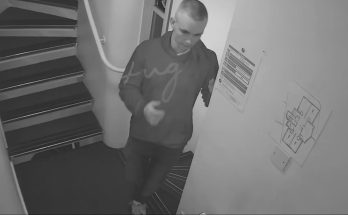
NASA astronauts Butch Wilmore and Suni Williams recently returned to Earth after spending 286 days aboard the International Space Station—far longer than their originally planned mission. Medical teams rushed to help both astronauts onto stretchers as they emerged from their SpaceX Crew Dragon capsule, a stark reminder of how profoundly space alters human physiology.
For nine months, Wilmore, 62, and Williams, 59, lived in an environment that fundamentally challenged every system in their bodies. Their return offers a rare opportunity to understand how extended space missions affect astronauts physically and what recovery looks like.
Face and Body Changes

Without Earth’s gravitational pull, bodily fluids shift dramatically upward. Up to 5.6 liters of liquid can migrate toward an astronaut’s head during spaceflight, creating what NASA calls “puffy face syndrome.”
Meanwhile, legs and feet appear shrunken—nicknamed “chicken legs” and “baby feet” by space agencies. Photos of Williams during her extended stay showed noticeable facial changes that sparked public concern.
Medical professionals explain this fluid redistribution as a natural consequence of microgravity, where nothing pulls bodily fluids downward. Most cosmetic changes resolve within three days after returning to Earth, though underlying physiological impacts take much longer to reverse.
Vision Challenges
Fluid shifts don’t just alter appearances—they press against astronauts’ eyes and optical nerves, causing Spaceflight Associated Neuro-Ocular Syndrome (SANS). About 70 percent of space travelers experience blurry or fuzzy vision as a result.
For Williams and Wilmore, this risk escalated with their mission length. Microgravity gradually changes eye structure, including optic nerve swelling, flattening of the eye’s posterior, and retinal folds development.
Most visual symptoms improve after returning to Earth, yet NASA acknowledges some effects remain permanent. Scientists continue monitoring both astronauts closely for vision changes, as SANS represents one of several challenges for future long-duration missions to Mars.
Brain Function Changes

Cognitive abilities undergo measurable changes during spaceflight. Research demonstrates astronauts process certain tasks significantly slower while orbiting Earth, showing impaired working memory, altered attention, and different risk assessment patterns.
Pressure changes within the brain, combined with sleep disruption and stress, contribute to these cognitive shifts. Fortunately, studies suggest these changes typically reverse once astronauts return home—an encouraging sign for Wilmore and Williams as they readjust.
Ongoing monitoring will assess how quickly both astronauts regain their baseline cognitive function, providing valuable data for planning future extended missions.
Muscle and Bone Concerns
Away from Earth’s gravity, muscles begin weakening almost immediately. Research indicates a 30-50 year old astronaut loses approximately half their strength during six months in space—a concerning statistic for Wilmore and Williams, who stayed even longer.
“The human body needs the Earth’s gravitational pull, and in an absence of that, a lot of things are not functioning correctly.” explains Dr. Jaquish, a biomedical engineer who studies bone density.
Astronauts exercise at least two hours daily on specialized equipment to combat muscle atrophy, yet this merely slows—rather than stops—deterioration.
Bone density suffers similarly in microgravity. Studies show astronauts can lose bone mass at rates 10 times faster than people with osteoporosis on Earth. Some astronauts never fully restore their pre-flight bone density, raising concerns about fracture risks following return.
NASA physicians estimate Wilmore and Williams may need six weeks of intensive rehabilitation to regain strength, including carefully guided exercise programs and nutritional support.
Weight Management Issues

Many astronauts struggle maintaining weight during missions. Frequent nausea combined with altered smell and taste perceptions from sinus pressure changes often reduce appetite significantly.
By November 2024, NASA medical staff expressed concern about Williams appearing “gaunt” in photos, indicating possible weight loss. Reports suggested she faced difficulties consuming high-calorie diets needed for space missions. According to an unnamed NASA source who was “directly involved with the mission” speaking to the New York Post: “The pounds have melted off her and she’s now skin and bones. So it’s a priority to help her stabilize the weight loss and hopefully reverse it.” NASA officials publicly remained more measured in their comments about her condition.
Williams later addressed these concerns during a NASA broadcast, claiming she had actually gained muscle mass. Determining accurate body composition changes remains challenging in space, where fluid redistribution masks true muscle and fat percentages.
Medical teams now monitor both astronauts’ nutrition intake carefully during their recovery phase, working to restore optimal body composition.
Fluid Redistribution Effects
Beyond cosmetic changes, fluid redistribution creates serious health risks. Astronauts face increased chances of developing Spaceflight Venous Thrombosis (SVT)—dangerous blood clots resulting from altered circulation patterns.
Blood pressure regulation mechanisms become confused in microgravity, as sensors evolved for Earth conditions detect fluid shifts and trigger inappropriate responses. Some astronauts require additional treatment for blood clotting issues even after returning to Earth.
Cardiovascular specialists will track Wilmore and Williams for signs of clotting or circulation problems during their first weeks home.
Radiation Exposure

During just one week aboard ISS, astronauts receive radiation equivalent to a full year’s exposure on Earth. Space radiation proves particularly dangerous, consisting of atoms stripped of electrons accelerated to near light speed.
Williams and Wilmore encountered particles from solar flares and galactic cosmic rays during their 286-day mission. When these particles strike human bodies, they damage DNA chains, triggering mutations potentially developing into cancers.
Medical doctors recommend proactive cancer screening strategies for returning astronauts due to increased risk factors. Radiation exposure also correlates with central nervous system damage, accelerated bone loss, and cardiovascular disease risks.
Both astronauts will undergo comprehensive health monitoring far beyond typical checkups, with special attention to signs of radiation effects.
Cardiovascular Challenges
Cardiovascular systems adapt quickly to microgravity by reducing blood volume since less effort becomes necessary to pump blood toward the brain. While efficient short-term, these adaptations cause problems when returning to Earth.
Reduced blood volume combined with weakened heart muscles can lead to dizziness, fainting, and irregular heartbeats during readjustment. NASA doctors monitor returned astronauts closely for orthostatic intolerance—inability to maintain blood pressure when standing.
For Williams and Wilmore, cardiac reconditioning forms a major component of their rehabilitation program, gradually rebuilding heart strength and blood volume.
Skin Problems

Studies reveal astronaut skin thins by nearly 20 percent during six-month missions. Microgravity appears to disrupt normal growth and repair processes, while space station environments introduce unique irritants.
Skin rashes occur 25 percent more frequently during ISS missions compared to general population rates on Earth. Healing takes longer for cuts or abrasions due to immune system changes in space.
Dermatologists now examine both astronauts for skin-related issues, though full recovery of skin thickness typically occurs within weeks of return.


